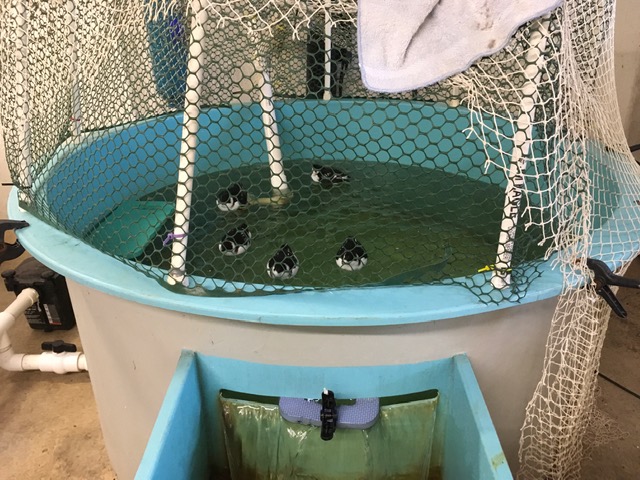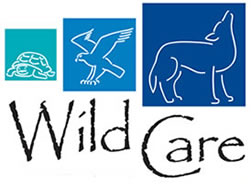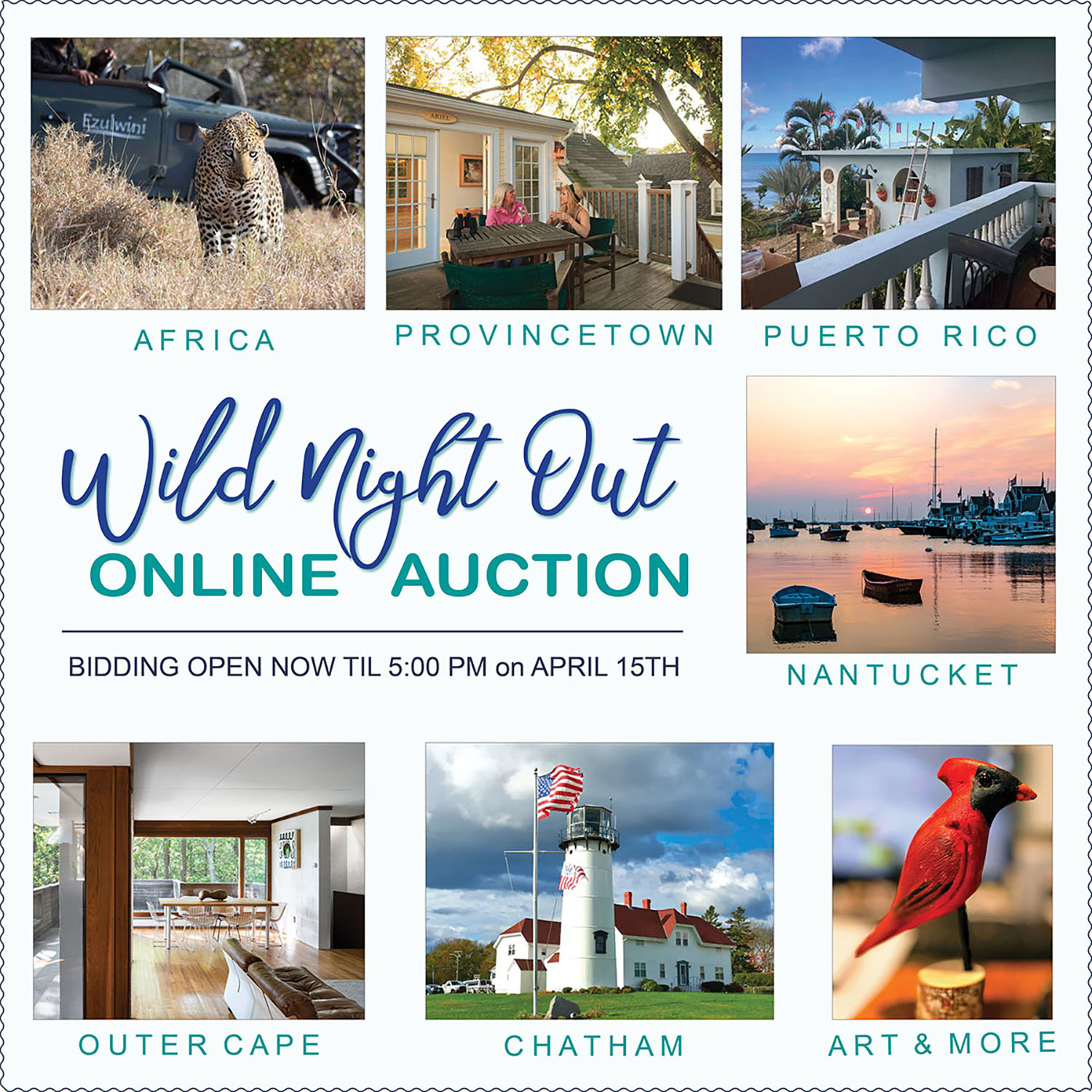
Difficult Dovekies – Fast and Furious
By Jennifer Taylor Animal Care Coordinator • Internship Coordinator
Five Dovekies in a pool photo by Jennifer Taylor
Every year from the beginning of November through January Wild Care is at the ready for Dovekies. We know they will come after Northeast winds and they will come in large numbers! The Nor’easters blow these little birds onto land and ground them. If you are not familiar with Dovekies they are tiny, adorable black and white pelagic seabirds who are unable to fly once they are forced onto land.
This means when a winter storm is in the forecast Wild Care gets one of our pools going along with setting up a large crate equipped with lights, mesh flooring, heat source, mirrors and water.
The storm’s strong winds will churn the ocean water and weakest birds often succumb. Dovekies have been found on the beaches, in Cape Cod neighborhoods, bike trails and parking lots.
As a wildlife rehabber I see Dovekie patients in the same way I see shrews and Hummingbirds. How can I possibly compare an arctic seabird to a Hummingbird or a Shrew? Easy. When they come to Wild Care’s door I feel the same hopeful dread. They are all difficult patients in a similar way.
Shrews must eat at least their own body weight every day to survive and can starve to death after just one hour. They even have venom that paralyzes prey so they can store invertebrates and mice for a continuous food supply.
Hummingbirds need to drink sugary nectar all day long to survive. Having a heartbeat of over 1200 beats per minute and wingbeats of 70 per second requires a lot of fuel! Hummingbirds must go into torpor every night to reduce their heartbeat and their body temperature so they can live.
So what does this have to do with Dovekies?
They also have high metabolisms, enormous energy needs and fast digestion. They also require a LOT of specialized food eating mostly copepods and certain other plankton. In the wild they must dive down to 90 feet for food in the Arctic and North Atlantic. Dovekies will not eat out of a dish for us. We must lavage fluids and force feed them. The fact is that we only have a few days at most to get a Dovekie back out to the ocean. The ocean that still raging from the storm that blew them in.
When a Dovekie arrives we calmly panic and then triage. We know if there is a broken bone or a wound that requires more than a few days’ healing time the bird will not survive. If they are only dehydrated and thin we weigh them, give them fluids, force feed them silverside fish every two hours and get them into a pool. Waterproofing is key. We know the only way they will survive is to get back into the ocean ASAP. When they are swimming and diving and preening and waterproof we release them at night (to avoid gulls attacks!) into the North Atlantic crossing our fingers and knowing we have done all we can.
Special Thanks to The Center for Coastal Studies. They have been wonderful and very helpful providing rides out past the GULL ZONE when they can for release.
Wild Night Out Online Auction
READY, SET, BID… We are so excited to announce that our Wild Night Out Online Auction is now live!
READ ALL NEWS
CALENDAR OF EVENTS
04 April, 2024
Wild Night Out Online Auction
EVENT DETAILS
05 April, 2024
Wild Night Out
EVENT DETAILS
28 February, 2024
Wildlife Winter/Spring Talk Series
EVENT DETAILS

DID YOU KNOW??
Wild Care has a state-of-the-art seabird therapy pool, which allows seabirds and waterfowl to exercise on running water. This will help our bird friends recover more quickly so they can get back to their watery habitats!

